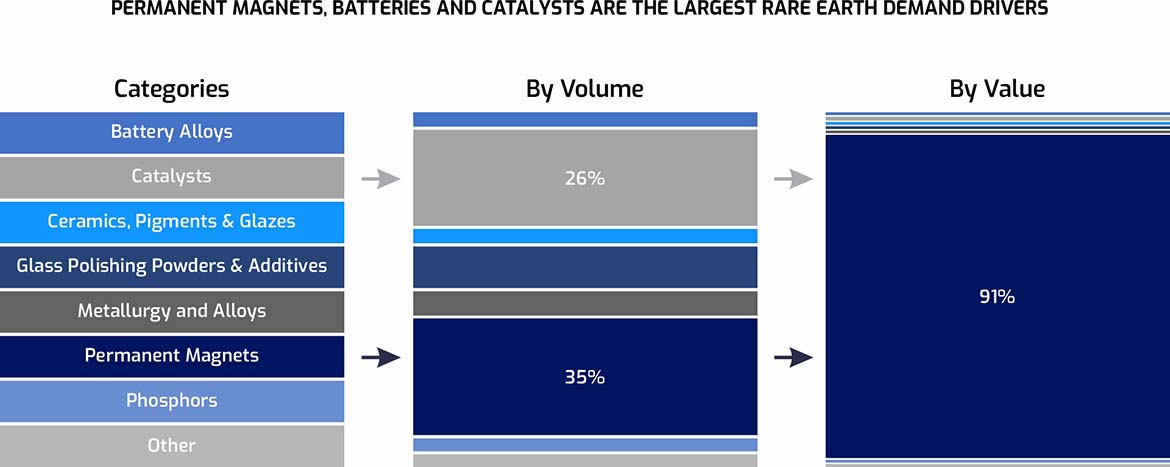INVESTING IS ADVISABLE WHEN THERE IS A HIGH DEMAND FOR SOMETHING SCARCE
WHY INVEST IN REE
By 2035, global primary energy is projected to experience an annual growth rate of around 1.3%. Fossil fuels will continue to be the dominant energy source, making up over 75% of total energy supplies in 2035. However, renewable energy is expected to be the fastest-growing source, with its share in primary energy reaching approximately 10% by 2035. This growth is driven by the increasing demand for green power generation and energy-saving technologies. In the coming years, the use of rare earth elements (REEs) in wind turbines and energy-efficient lighting will be significant applications of REEs.

Global Rare Earth Consumption in Previous Years
In 2018, permanent magnets and catalysts accounted for more than 60% of global total rare earth oxide (TREO) consumption in terms of volume. However, in terms of value, permanent magnets alone contributed to over 90% of the total value of global TREO consumption. This dominance is expected to grow as demand and prices for neodymium, praseodymium, dysprosium, and terbium continue to rise significantly in the future.

The demand for neodymium, lanthanum, dysprosium, and cerium is currently the largest in the world. Moreover, it is predicted that the demand for these four rare earth elements will grow faster than the demand for all other rare earth elements in the coming years. This poses a challenge for the supply-side as it may struggle to keep up with the increasing demand. According to our forecast, by 2030, the global annual demand for neodymium oxide and dysprosium oxide (or equivalent forms) will surpass the global annual production significantly. This could lead to the depletion of existing inventories and ultimately result in shortages of these crucial magnet materials if additional sources of supply are not developed.

In the future, it is predicted that the global demand for neodymium oxide (or a similar oxide) will reach unprecedented levels due to the growing need for rare earth permanent magnets. This will further worsen the existing imbalance between the production and demand of other rare earth elements, like cerium oxide if the industry continues with its current approach.
